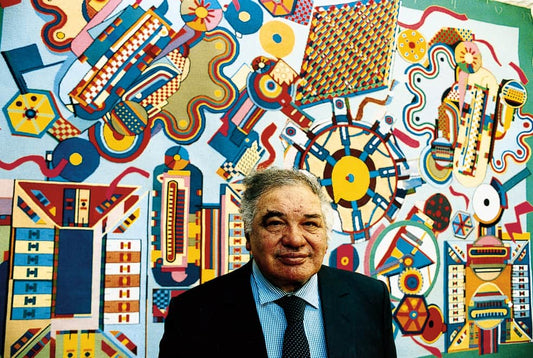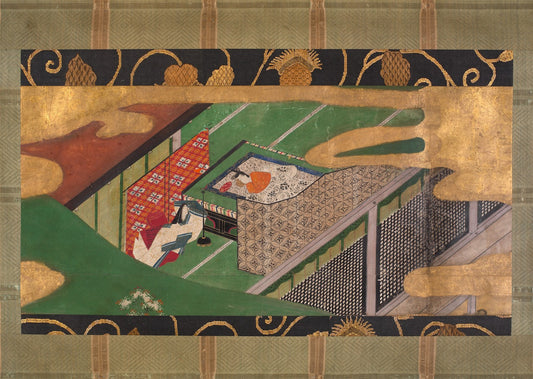Feature image: Cincinnati Union Terminal Rotunda via Wikimedia-EEJCC
Art Deco: A Timeless Aesthetic
There are few design styles as beloved and iconic as Art Deco. Short for French Art Decoratifs, Art Deco was the dominant architecture and design style across America and Europe from the 1920s to the 1930s. As beloved as this aesthetic is, it often gets convoluted and used as a placeholder for describing anything with a vintage look. But authentic Art Deco carries a richly defined style that represents a time of booming industry and lavish lifestyles. A streamlined look defines the style. It should be clean, simple, and geometric and evoke a sense of richness. Art Deco dots the skylines of many American cities, such as Chicago, New York, and Miami.
The term “Art Deco” was first used by Bevis Hillier in 1968 for their book “Art Deco of the 20s and 30s.” Hillier aimed to revisit the design style and begin a new surge of appreciation for the aesthetic. The first elements of Art Deco as an emerging aesthetic of the 1920s started at the Exposition Internationale des Arts Decoratifs et Industriels Modernes in France. This design showcase introduced the latest cutting-edge architecture and interior design styles to over 15,000 people. At this exposition, the Art Deco style was referred to as the modern style. Art Deco was derived from the exposition’s original name.

When it emerged at the time, Art Deco was meant to be a reflection of upper-class values in an industrial age. Materials frequently used in Art Deco buildings were expensive manufactured materials such as stucco, steel, chrome, concrete, and decorative glass. These materials showed off the power of industry at the time, and the abundance of wealth manufacturers were receiving from this. Building designs focused on long, linear looks and an upwards and outwards illusion.
At the time, skyscrapers were still relatively new, with the first official skyscraper being built in 1885. Art Deco came at a time when architects were beginning to experiment with the new building format and how they could put their own touches on it. The goal would be to draw your eyes up the entire length of the building and give it a sleek look.
Recognizing Art Deco
Geometric motifs such as zig zags, triangles, pyramids, and florals were heavily incorporated into elements throughout the aesthetic. You could find these in building shapes, friezes, windows, and building ornamentations. Art Deco interiors were also focused on showcasing an abundance of wealth. Typical Art Deco interiors would feature jewel tones and golden accents; homes would feature moderately extravagant items to celebrate the financial success of the owner. Special attention was given to creating sleek, ornate furniture to amplify the surrounding aesthetics.


Many of the pioneers of Art Deco were French designers and architects who were part of the original Exposition Internationale that kicked the movement off, such as Swiss-French architect Le Corbusier. Le Corbusier was dedicated to marrying functionality with harmony and beauty. His buildings, such as the Villa Savoye, showcased Art Deco influence in the modern homes of the wealthy. American architect William Van Alen is regarded as designing one of the most influential Art Deco buildings of all time: the Chrysler Building in New York. Van Alen spent a portion of his career studying in Paris, which led to the influence of Art Deco on his work. French furniture designer Emile Jacques Ruhlmann is hailed as a major influence in the design motifs found within Art Deco. His belief was that upper-class patrons would be the ones to continue the existence of art, so much of his work was catered to giving them the feeling of luxury and wealth.
Influential Art Deco Cities
Many rapidly developing cities at the time took the booming economy and industry as a chance to craft magnificently designed cities with a clear Art Deco influence. Some key American cities include Chicago, New York, Miami, and Cincinnati. What these American cities had in common was the financial support of wealthy industrialists who used the cities for business and pleasure. Miami may seem a strange choice to be an Art Deco icon. Still, in 1910, entrepreneur Carl Fisher saw the potential for the land. He purchased a large portion of it to build luxury hotels, restaurants, theaters, and anything else your typical vacationing wealthy patron may need.

Internationally, key Art Deco cities outside of Paris included Shanghai, Mumbai, and Casablanca. Art Deco’s influence was being felt across the globe. Many of these cities had Western trade connections or were still being occupied by Western forces. Mumbai is one of the most heavily art-deco cities in the world behind Miaimi, largely due to the British occupation of India. But the Art Deco in Mumbai takes on its own unique portrayal of the design by Indian mythology into designs and uses common colors of other Indian architecture.
The role of Egyptian influence in Art Deco
You may notice the use of ancient Egyptian-inspired design and architecture throughout various Art Deco builds and designs. During the early 1900s, major discoveries of burial tombs and pyramids were made throughout Egypt. These archaeological discoveries greatly inspired the Art Deco movement due to the perceived inherent luxuriousness of these priceless artifacts. Golden sarcophagus, vibrant jewels, and other displays of wealth found in these relics also matched the opulence and desires of the current era.

The romanticization of ancient Egypt served as a well of inspiration for Art Deco pioneers. It’s why you’ll see many buildings that have an almost pyramid-like design in terms of floors and symmetry, such as the Civic Opera building in Chicago. While it’s not directly shaped like a pyramid, the stacked layers of the building forming an upward point carry the same stylistic elements. Another example of pyramid influence is the top of the Chrysler Building, which more outwardly shows off its influence.
Art Deco’s Longevity
Art Deco is a buzzword that often makes an appearance in trendy home designs. The fascination with this movement did not end in the 1920s and has remained a cornerstone of inspiration in much of design today. There is no definitive answer as to why Art Deco has maintained such status within the design world, especially considering the style didn’t receive a name till nearly 40 years after its debut. However, common theories about Art Deco's popularity tend to return to the design's timelessness.
Sleek, geometric styles offer a relatively plain base that is easy to add your own style and flair to. Often, Art Deco-inspired pieces aim to accomplish the original goal of the style, which is to show off the illusion of luxury and wealth. Times when Art Deco has made a more prominent resurgence, such as the 1960s and the 2010s, tend to come with eras of relative peace and economic stability where more coin can be dedicated to personal effects.

Each revitalization of the movement sees the current generation taking parts of the design that resonate with them. The 1960s focused on unique, stylized home decor items, while the 2010s fostered an appreciation of minimal, intentional design. Art Deco is a style that is easy to adopt as your own and has become a timeless style that has proven itself time and time again. Not to mention, many of the most famous cities worldwide still carry the glamorous Art Deco aesthetic across their buildings and public art. It’s unlikely fascination with this movement will ever truly die down, as it remains an everyday influence across so much of our design culture.
©ArtRKL™️ LLC 2021-2023. All rights reserved. This material may not be published, broadcast, rewritten or redistributed. ArtRKL™️ and its underscore design indicate trademarks of ArtRKL™️ LLC and its subsidiaries.





